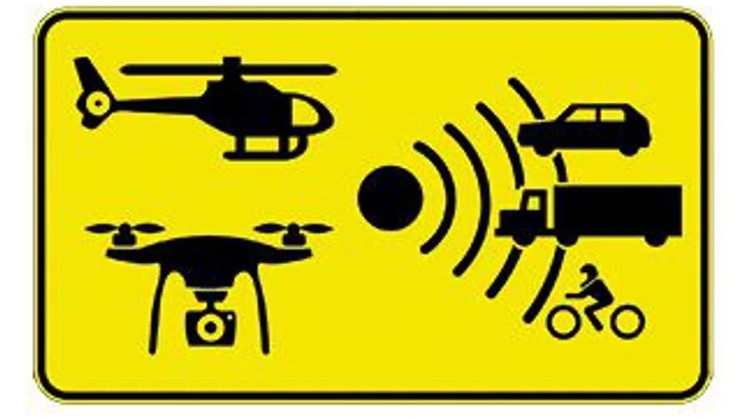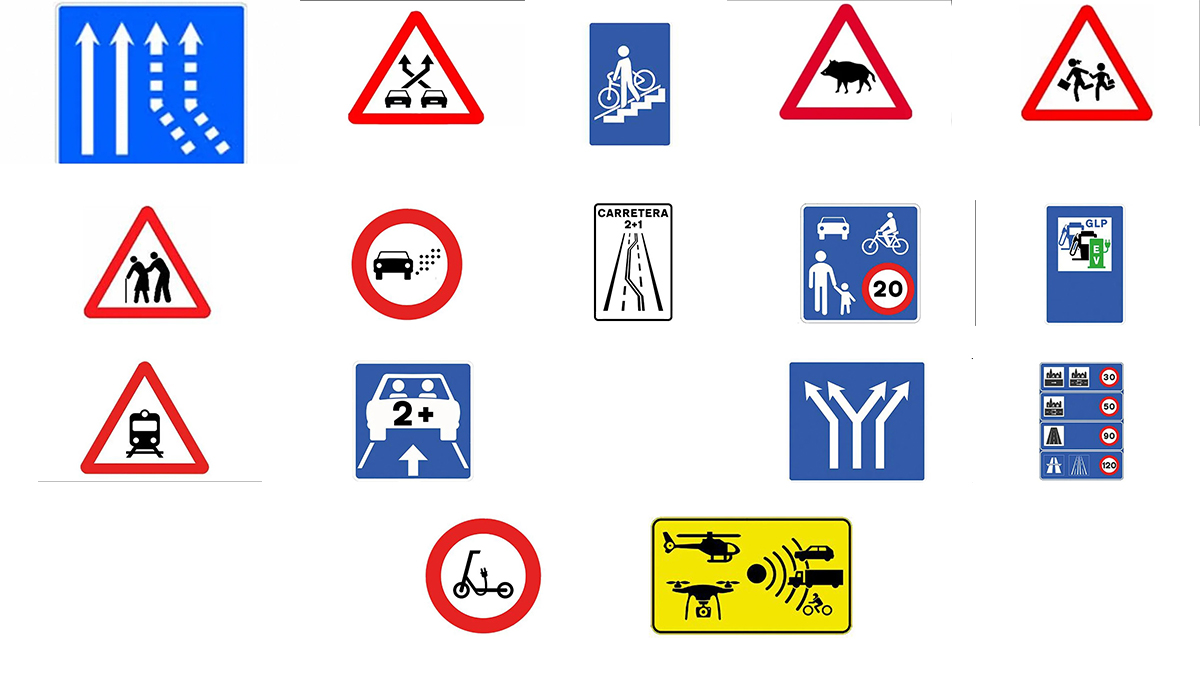Spain’s roads are getting a comprehensive update! The Council of Ministers, at the initiative of the Directorate-General for Traffic (DGT), has approved the update of the official catalog of traffic signs. This groundbreaking measure aims to adapt road signage to the rapid social, technological, and mobility changes Spain has experienced in recent years. The goal is to create a unified, more understandable, and coherent catalog for the entire national territory.
Why the Update is Necessary Now
The need for a comprehensive revision of traffic signs was undeniable. New forms of mobility, such as Personal Mobility Vehicles (PMVs), required adapted rules and thus new signs. With this reform, the DGT is responding to current traffic situations and creating the basis for a safer and more efficient infrastructure.
What Specifically Changes: An Overview
The new standard introduces a variety of changes that go beyond mere redesign:
- New Signs: Specific, innovative signs are introduced to regulate new modes of transport and manage current traffic situations.
- Redesign of Pictograms: Existing pictograms are modernized to improve their comprehensibility and recognition. This applies, for example, to signs for railway crossings or bicycle paths.
- Improved Visibility: The legibility and recognizability of existing signs are optimized.
- Elimination of Obsolete Signs: Signs that are no longer relevant or covered by newer regulations are removed from the catalog.
- Focus on Sustainability and Inclusivity: The reform considers ecological aspects and promotes gender-neutral, inclusive imagery in its symbolism. For instance, gender-specific connotations are eliminated to address all road users equally.
- Size Adjustments: The sizes of the signs are optimized to enable more efficient and sustainable production.
- Expanded Information: Gas station signs will be expanded to include information on new fuels. More detailed parking signs will be introduced, and others will be modified as part of the humanization efforts in many municipalities.
This update is more than just a cosmetic adjustment. It ensures that the road signage system conveys clear, direct, and universally understandable messages. This aligns with the principles of an effective semiotic system, in accordance with the Vienna Convention on Road Signs and Signals.
Entry into Force and Gradual Implementation
The Royal Decree will come into force on July 1, 2025. However, the physical change of signs on Spain’s roads will be carried out gradually over time. It is important to note that the new signs will not be immediately included in theoretical driving tests. This is to allow driving schools sufficient time to update their manuals and optimally prepare future drivers.
A Comprehensive Reform for Greater Safety and Coherence
This reform, carried out in collaboration with the Ministries of Transport and Sustainable Mobility, Industry, Tourism, and Defense, revises Title IV of the General Traffic Regulations. This title deals with vertical signage, construction and lighting, and indicative signs and traffic lights. The new catalog consolidates all vertical signs and road markings in a uniform form, symbolism, and nomenclature. Annex I of the decree visually and orderly summarizes all details regarding form, color, design, meaning, and dimensions.
Furthermore, the Ministries of Interior and Transport and Sustainable Mobility can flexibly respond to future needs by joint ministerial order, changing, deleting, or adding new signs. This ensures a dynamic adaptation of the signage system to constantly evolving requirements.
Sign S-70:
It indicates the convergence of lanes on the road and warns the driver of a reduction in the number of lanes.
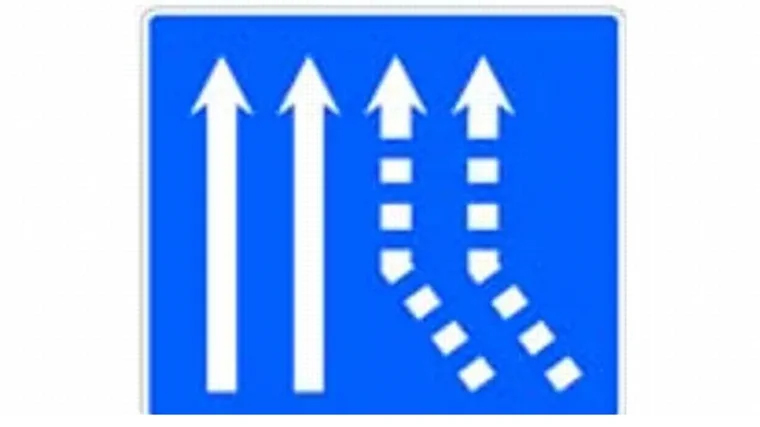
Sign P-35:
A warning sign indicating a braided lane where lanes change direction.
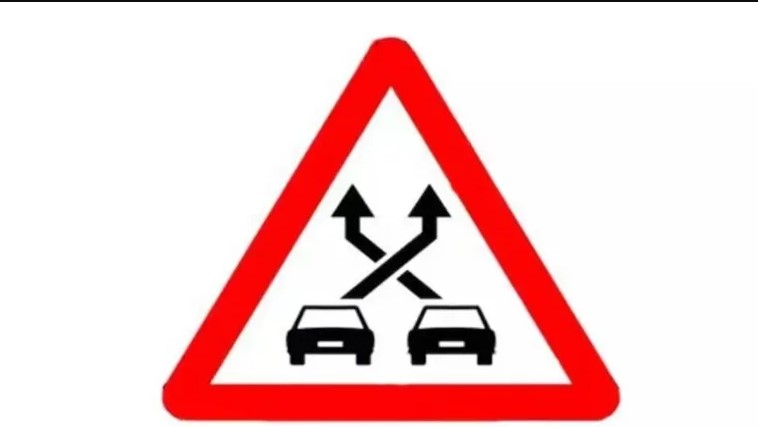
Sign S-14:
A sign indicating the presence of pedestrian underpasses or overpasses.
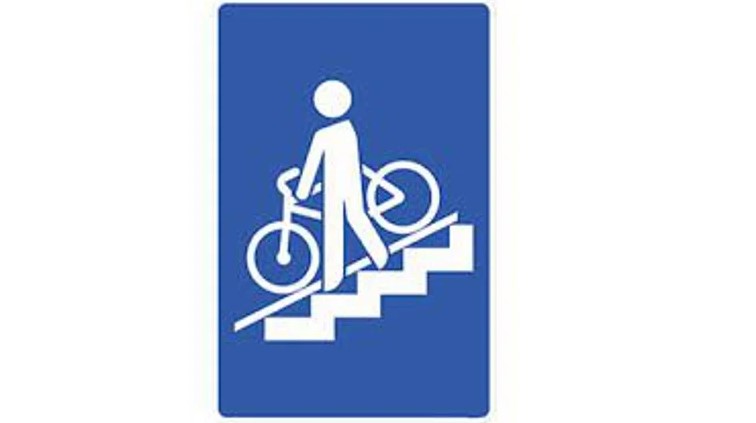
Sign P-24:
Danger sign indicating the presence of animals in the wild.
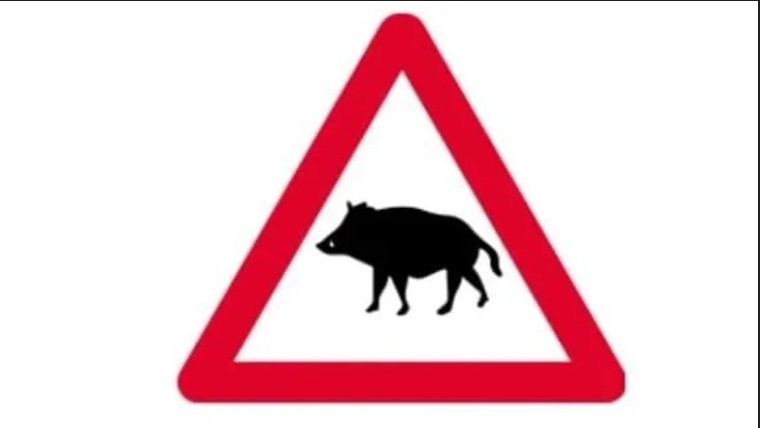
Sign P-21a:
School zone warning sign.
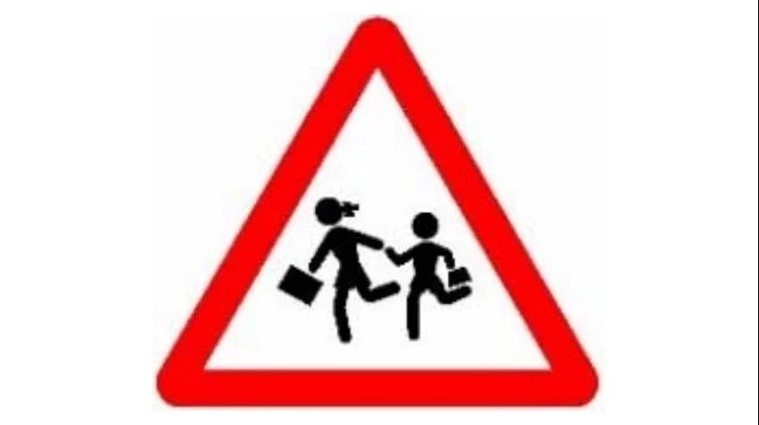
Sign P-21b:
Warning sign for an area frequented by elderly people.
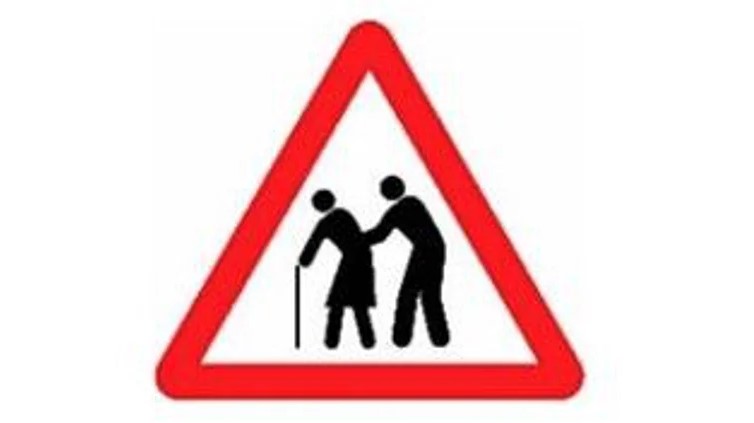
Sign P-8:
Approach sign to an accessible railway crossing
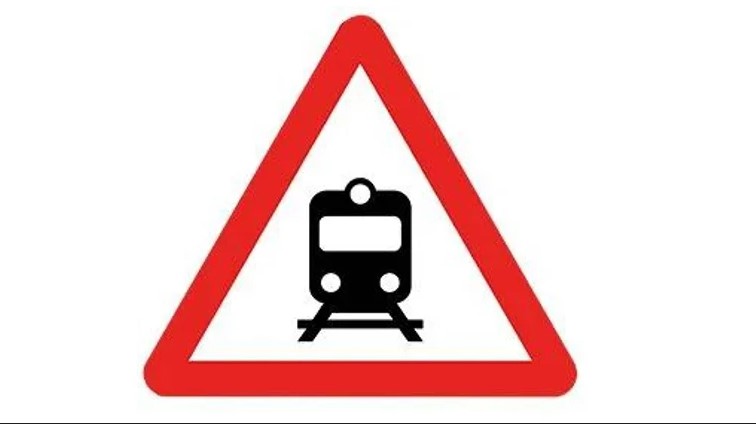
Sign R-118:
Prohibition of access to personal mobility vehicles. (This is a new sign and applies to all personal mobility vehicles, not just scooters.)

R-120 Sign:
Entry of vehicles prohibited by environmental stickers or other environmental criteria. Prohibition of access to vehicles based on their environmental label or other specified environmental criteria. The conditions are indicated on a supplementary S-860 sign or on a plate containing the sign, where appropriate, with reference to the classification of each vehicle according to its environmental label, as defined in the regulations.
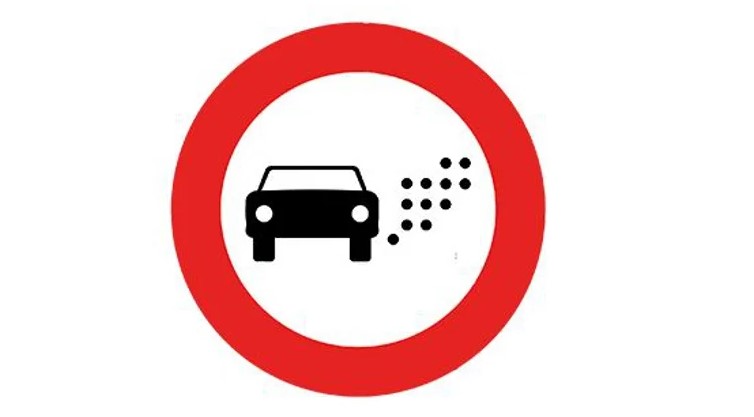
Sign S-1c:
Motorway 2+1. This indicates the principle of a 2+1 road, i.e., a road consisting of three lanes and allowing traffic in both directions. The middle lane is intended to facilitate overtaking maneuvers and is reserved alternately for one direction of travel and the other. This sign can also indicate the turnoff of an intersection leading to a 2+1 road.
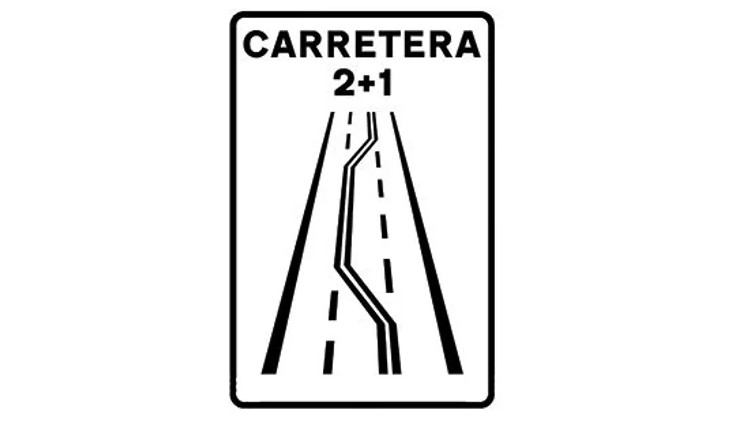
Sign S-47:
Coexistence zone. This designates a traffic area primarily intended for pedestrians, where the following special traffic rules apply: The maximum speed of vehicles must be 20 km/h; traffic is divided between vehicles, cyclists, and pedestrians; pedestrians have priority and may use the entire traffic area, and therefore pedestrian crossings are not signposted; and, where appropriate, pedestrian vehicles may circulate in both directions, unless otherwise specified by the competent authority; vehicles may only be parked in places designated by signs or markings; games and sports are not permitted.
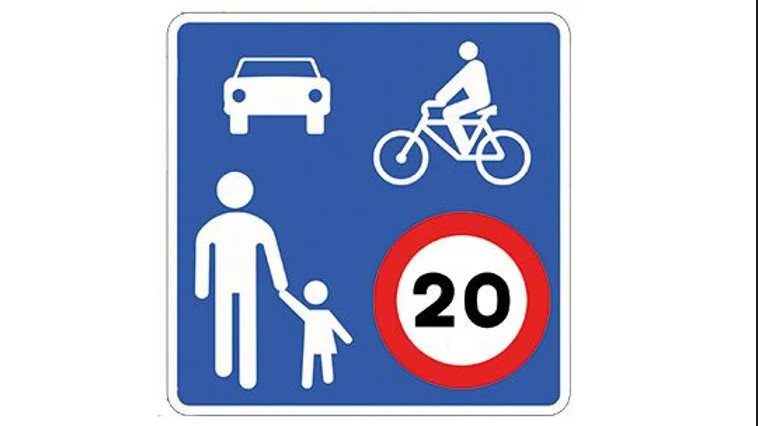
Sign S-51b:
Lane reserved for high-occupancy vehicles. This designates one or more lanes designated exclusively for the traffic of high-occupancy vehicles. The image shows the number of people above which a high-occupancy condition is considered, as determined by the relevant governing body. If the lane(s) are reserved not only for HOVs but also for one or more other vehicle types, the corresponding images may be combined in the same way as on sign S-51a.

Sign S-63b:
Forking on three-lane roadways. This indicates that on a roadway with three lanes traveling in the same direction, there will be a fork in the center lane, which will result in a change in the direction of the four resulting lanes, two to the left and two to the right. (It is similar to a whole series of signs—from S-60 to S-63—that attempt to better inform drivers about the location of forks in the road, allowing them to navigate in advance to the lane most suitable for their destination.)
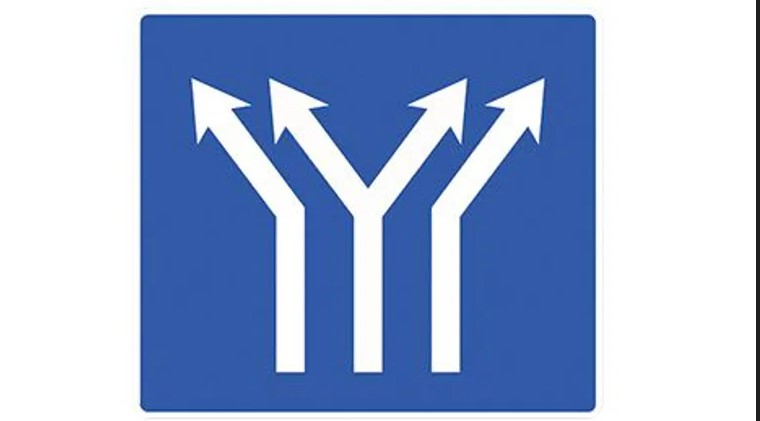
Sign S-105 (a-f):
Indicates the location of a fuel pump or filling station, including LPG (S-105 c), electric charging (S-105e), or multiple fuel pumps (S-105b, S-105d, or S-105f).
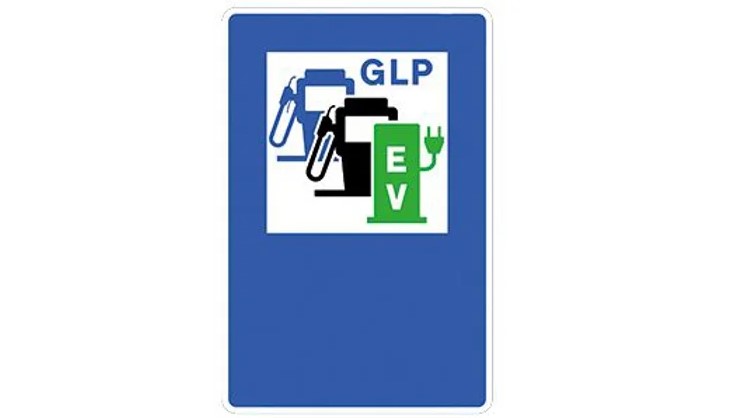
Sign S-940:
Speed limits in Spain. It indicates the general speed limits on various road types and in urban areas in Spain.
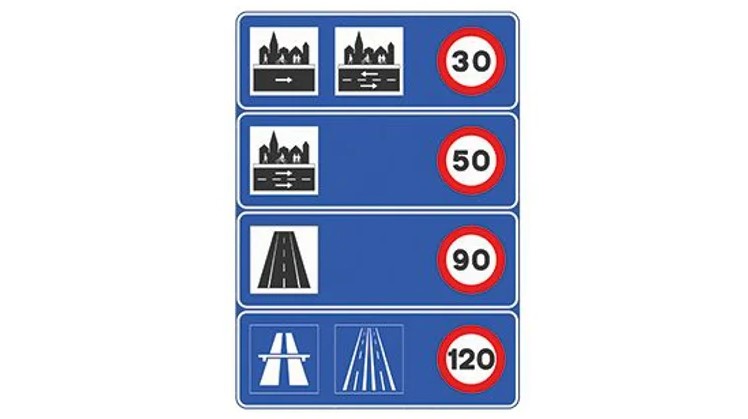
S-991G sign:
Aircraft speed control. This sign indicates the possible presence of aerial speed control devices, such as helicopters or drones, in the section. If these controls refer to a specific type of vehicle, the sign may only contain the pictogram corresponding to that vehicle.
